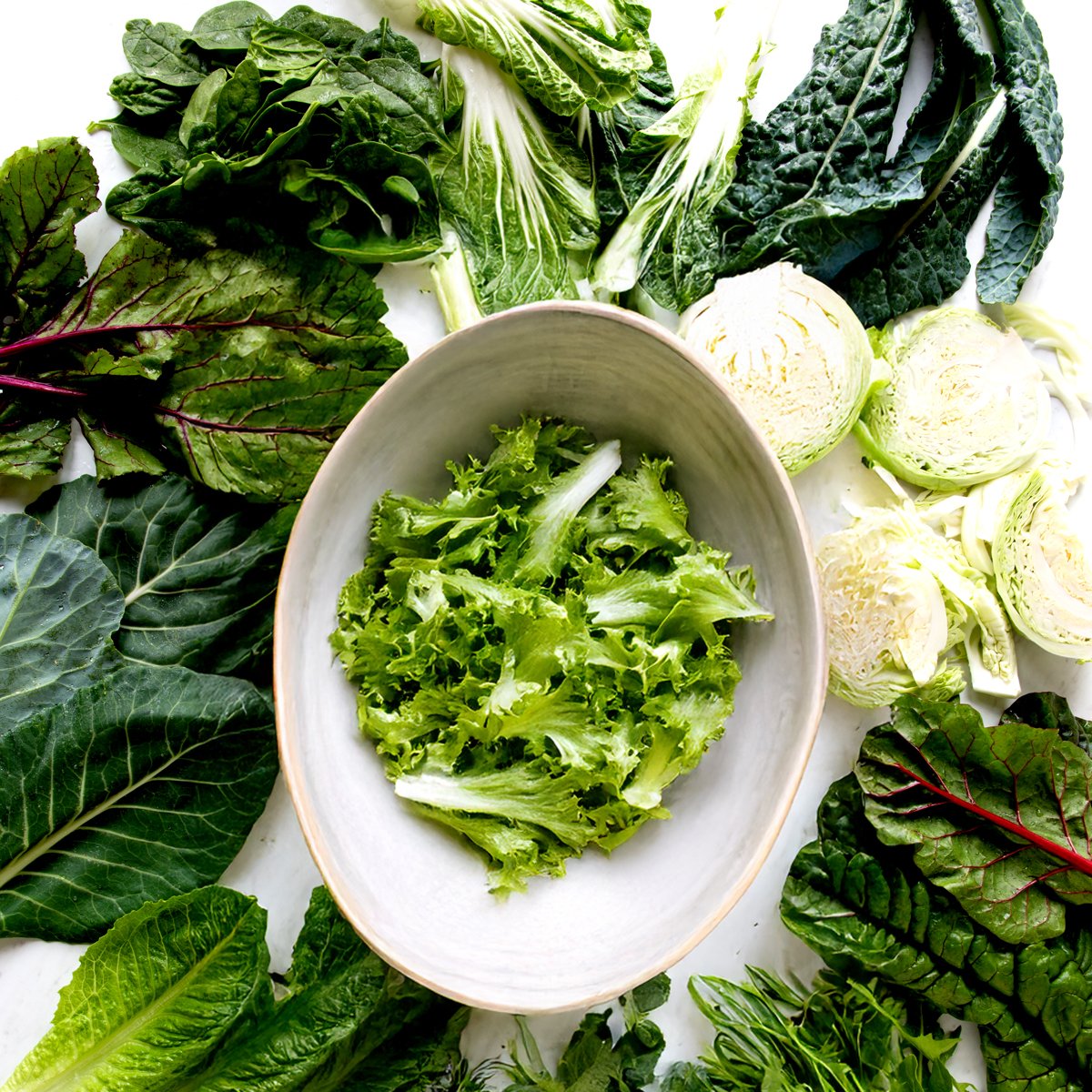
This post may contain affiliate links, meaning I can earn a small commission from items you purchase (at no cost to you).
Table of contents
Step aside salad. You’re no longer the only way to get leafy green vegetables into our diet. The following nutritional powerhouses deserve a starring role in any kitchen— not just for a trained chef. Packed with vitamins, minerals, and antioxidants, leafy greens offer a wealth of health benefits and surprising versatility in the kitchen.
I started my love affair of leafy greens with blending baby spinach into my smoothies. Over time, I started to crave more leafy green vegetables. From vibrant stir-fries to hearty plant-based soups and even delicious green smoothies, it’s time to look beyond the bowl and discover the exciting world of cooking and blending with leafy greens.
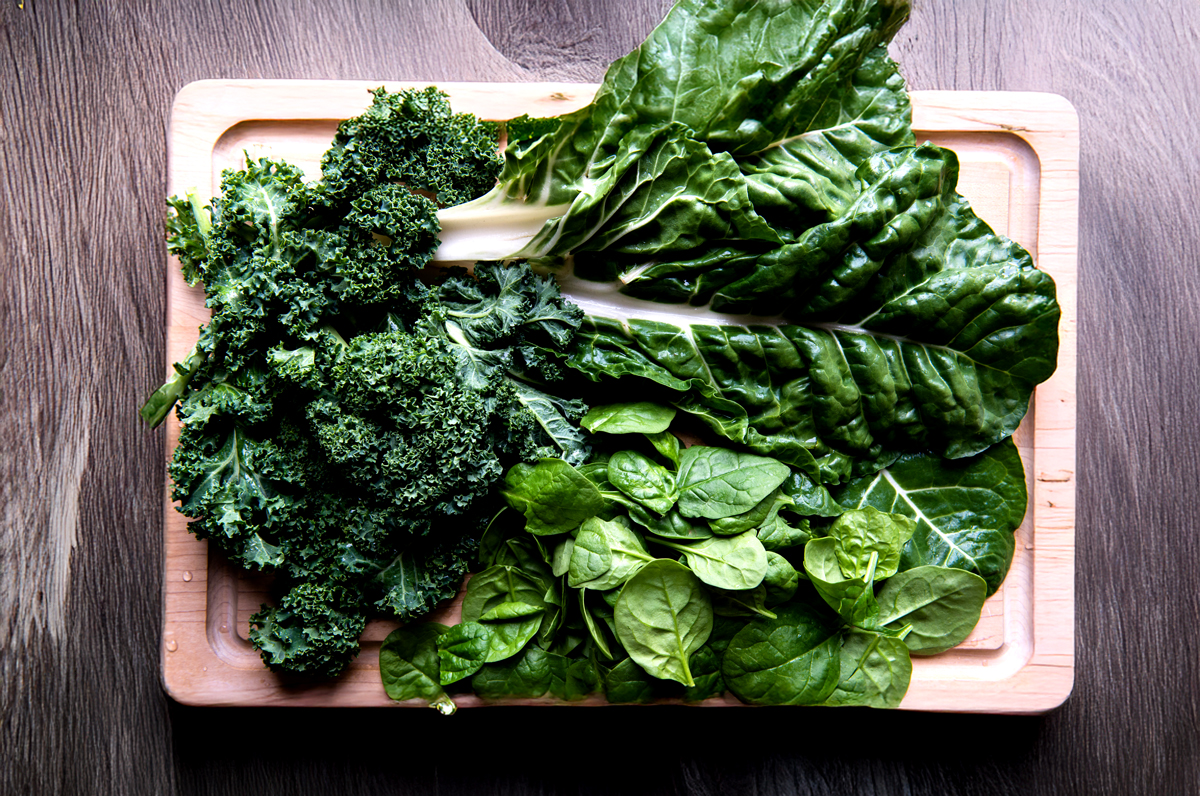
Health Benefits of Leafy Green Vegetables
Leafy greens are super important for a healthy diet. They’re nutrient-dense, green veggies that provide tons of vitamins and minerals. According to a report in the journal Neurology, a daily serving of leafy greens can lead to slower age-related cognitive decline. The term “leafy greens” encompasses a wide array of edible leaves, each with its unique flavor profile and texture. Getting familiar with the leafy green varieties is the first step to unlocking their culinary potential.
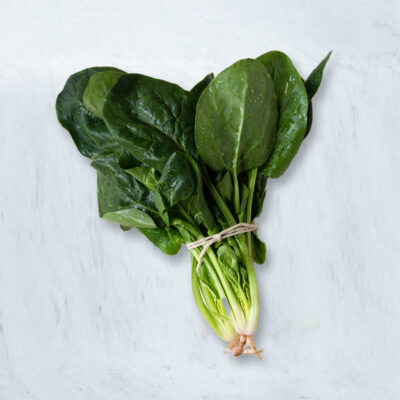
Spinach
Mild & slightly sweet
Spinach is a nutritional powerhouse, packed with vital vitamins (K, A, C), folate, and iron, crucial for bone health, vision, immunity, cell growth, and red blood cell production. Its high antioxidant content and plant compounds may also lower the risk of chronic diseases, making it a valuable addition to a healthy diet.

Kale
Hearty & slightly bitter
Kale has different varieties like curly kale, Lacinato (dinosaur) kale, and baby kale offer varying textures. With 684% of the recommended daily value of vitamin K, 206% of the RDV of vitamin A and 134% of the RDV of vitamin C, this dark leafy green packs a health punch.
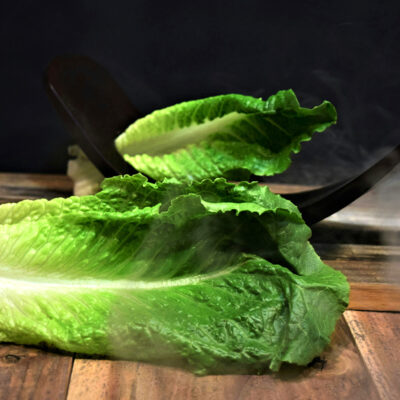
Lettuce (Romaine, Butter, Iceberg)
Mild & slightly sweet
Primarily used raw for salads and wraps, some firmer varieties like romaine can be lightly grilled or braised. Romaine lettuce is high in fiber and low in calories. The vitamin C and beta-carotene content help to lower cholesterol and prevent build-up on artery walls, which reduces the risk of a heart attack.
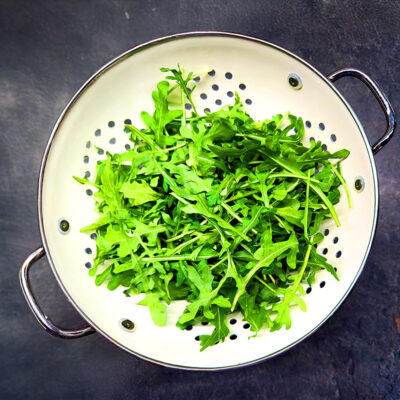
Arugula (Rocket)
Peppery & slightly bitter
Arugula adds a zesty kick to salads and cooked dishes. More than just a garnish, one cup of this leafy green contains 27.7% of the RDV of vitamin K. Tastes best on top of pizza, in a salad or sandwich. I don’t recommend making smoothies with it.
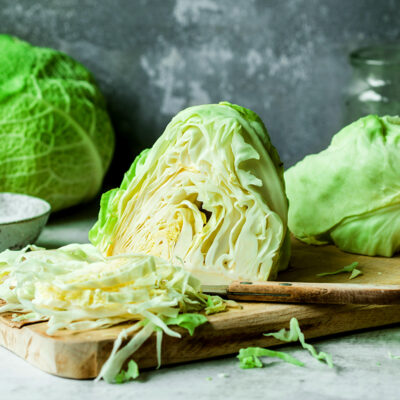
Cabbage
Hearty & pungent
This leafy green can actually be purple, red, white or green, but is definitely still considered a leafy green. I love using cabbage as a plant-based taco shell, blended in a cabbage smoothie or roasted cabbage with light seasoning. Loaded with fiber, folate, vitamin B6 and antioxidants which help fight inflammation.
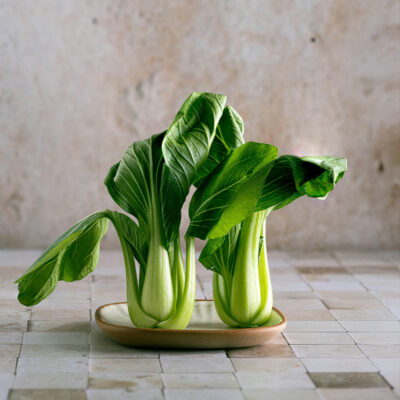
Bok Choy
Mild & slightly sweet
Bok choy is excellent stir-fried, steamed, or added to soups. Full of vitamins A and C, bok choy ranks high for nutrient density as well. All parts of the plant can be used: shredded in a salad, my vegetarian ramen, cooked in soup or blended in a smoothie.
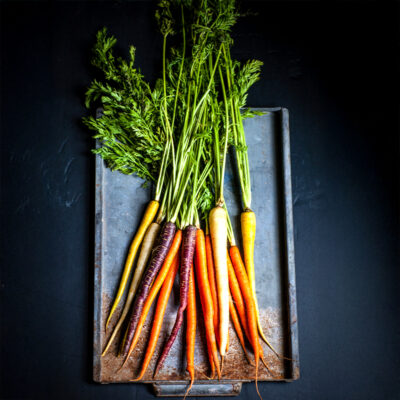
Carrot Greens
Herbaceous & slightly bitter
Carrot tops offer surprising nutrition, providing vitamin K for blood clotting and bones, vitamin C for immunity, and potassium for blood pressure regulation. Their phytonutrients also offer potential anti-inflammatory and antioxidant benefits, making them a worthwhile to smoothies or even pesto!
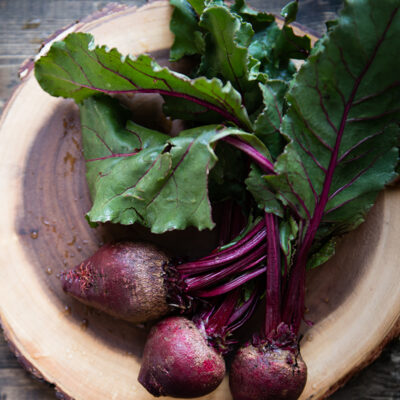
Beet Greens
Slightly earthy
Beet tops are a nutritious leafy green, rich in vitamins K and A, vital for blood clotting, bone health, vision, and immunity. High in phytonutrients, including betalains, beet greens have anti-inflammatory benefits. When blending smoothies with beets, wash and blend in the beet greens.
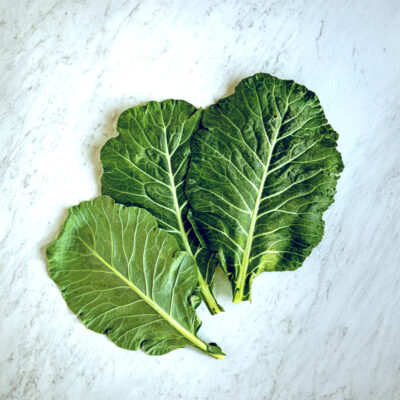
Collard Greens
Tough & slightly bitter
Collard greens benefit from long cooking times. Like their other cruciferous family members, collard greens are great cancer fighters. They are also pretty good at helping your body digest foods properly with all the fiber inside. They are most popular steamed, but adding them raw to your smoothies will provide greater health benefits.
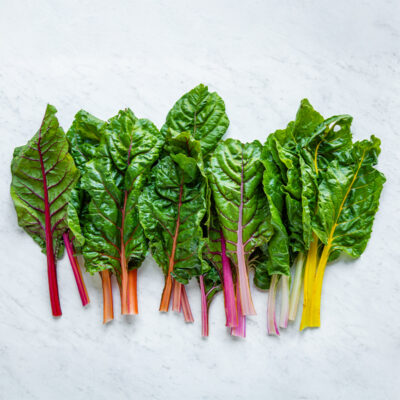
Swiss Chard
Mild & slightly earthy
Mild and slightly earthy with colorful stems that are also edible, Swiss chard is a beautiful and nutritious addition to many dishes. Chard is a colorful, dark leaf known for its ability to regulate the body’s blood sugar. Translation? If diabetes or maintaining blood sugar levels is a concern, add this veggie to your regular rotation.
Leafy Greens Recipes
5 Ways to Use Leafy Greens
Ready to move beyond the traditional salad? Here are some inspiring ways to incorporate more leafy greens into your daily meals:
- Sautéed and stir-fried: Spinach, baby kale, and Swiss chard wilt beautifully in a hot pan with a little olive oil, garlic, and a pinch of salt and pepper. A squeeze of lemon adds brightness. Heartier greens like kale, mustard greens, and bok choy hold up well in stir-fries. Add them towards the end of cooking to maintain some texture and vibrant color. Pair them with your favorite proteins, vegetables, and sauces.
- Soups for warmth and nutrition: Stir in chopped spinach, kale, or Swiss chard during the last few minutes of cooking vegetable soup recipes. They will wilt down and add a boost of nutrients and a touch of freshness. Blend cooked greens like spinach or kale with broth, sautéed onions, and a touch of cream or coconut milk for a smooth and nutritious soup.
- Baked delights with a green twist: Incorporate chopped leafy greens into egg-based dishes like quiches and frittatas. They add color, flavor, and valuable nutrients. Layer sautéed greens into pasta bakes and lasagnas for an extra dose of vegetables. They blend seamlessly with the other ingredients. Add finely chopped cooked greens to roasted root vegetables, or use them as a filling for savory pastries and dumplings.
- Blended goodness in smoothies: Don’t be afraid to toss a handful of spinach or kale into your breakfast smoothie. The flavor is surprisingly mild when combined with fruits, yogurt, and other ingredients.
- Creative raw preparations: While not technically a recipe, juicing leafy greens is a great way to consume a concentrated amount of nutrients. Blend arugula, spinach, or kale with nuts, garlic, olive oil, and lemon juice for a vibrant and flavorful pesto. You can also layer large lettuce leaves like romaine or butter lettuce to create healthy and delicious lettuce wraps and sandwiches.
Benefits of Rotating Leafy Greens
I often talk about rotating your greens when making green smoothies. This is because leafy greens come from all different plant families, each offering different health benefits. Yet if spinach is your jam, no worries! Keep doing that. You can always have a salad with kale or make a soup with Swiss chard.
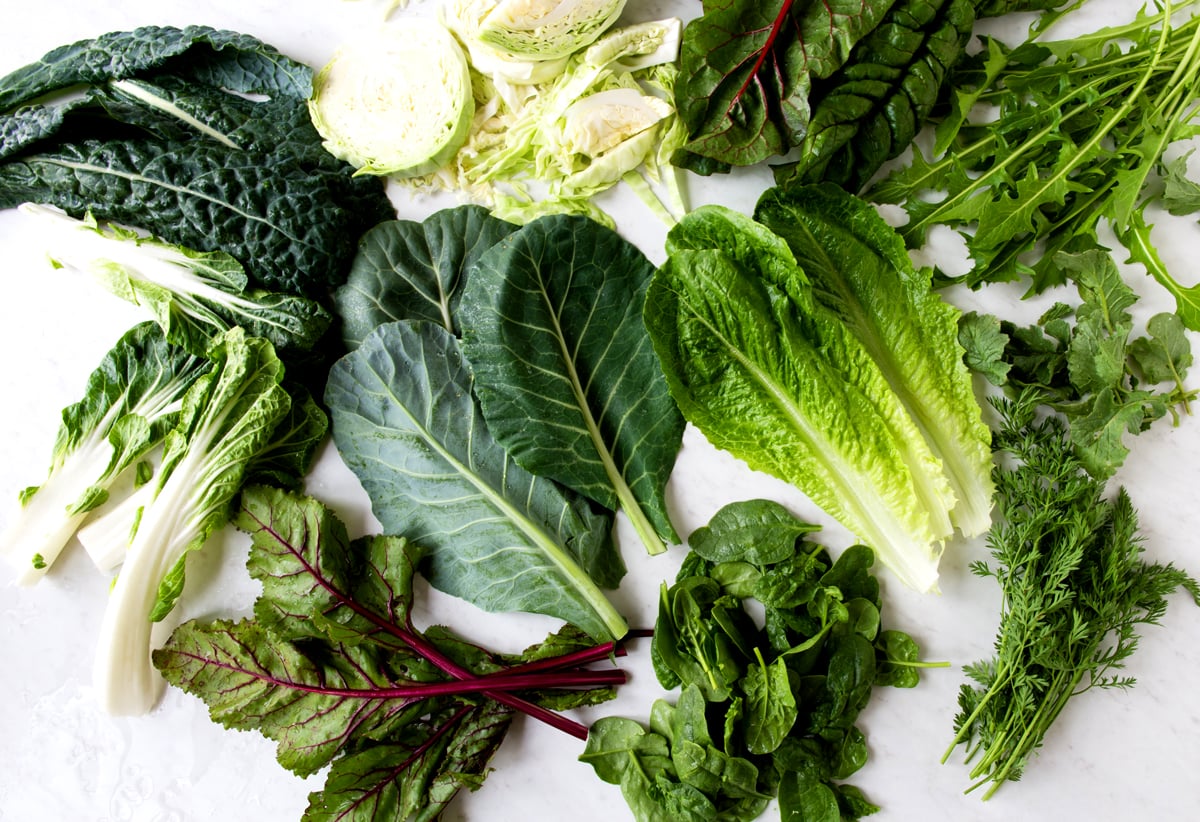
Tips for Cooking with Leafy Green Vegetables
Leafy greens are more than just a salad component. Their versatility and nutritional benefits make them a valuable addition to any healthy diet. By exploring different cooking methods and incorporating them into a variety of dishes, you can unlock a world of flavor and boost your well-being. So, step away from the salad bowl and embrace the green revolution in your kitchen!
- Experiment! Don’t be afraid to try different combinations and cooking methods to discover your favorite ways to enjoy leafy greens.
- Wash thoroughly: Always wash leafy greens thoroughly under cold running water to remove any dirt or grit. A salad spinner can be helpful for drying them.
- Remove tough stems: For heartier greens like kale and collards, remove the tough central stems before cooking.
- Don’t overcook: Most leafy greens cook quickly. Overcooking can make them mushy and reduce their nutritional value.
- Balance flavors: The bitterness of some greens can be balanced with acidic ingredients like lemon juice or vinegar, or by pairing them with sweeter or richer flavors.
What are your favorite leafy greens? Drop a comment below and let me know if this list has inspired you to try a new ingredient, or if you’ve got a new green for me to try!
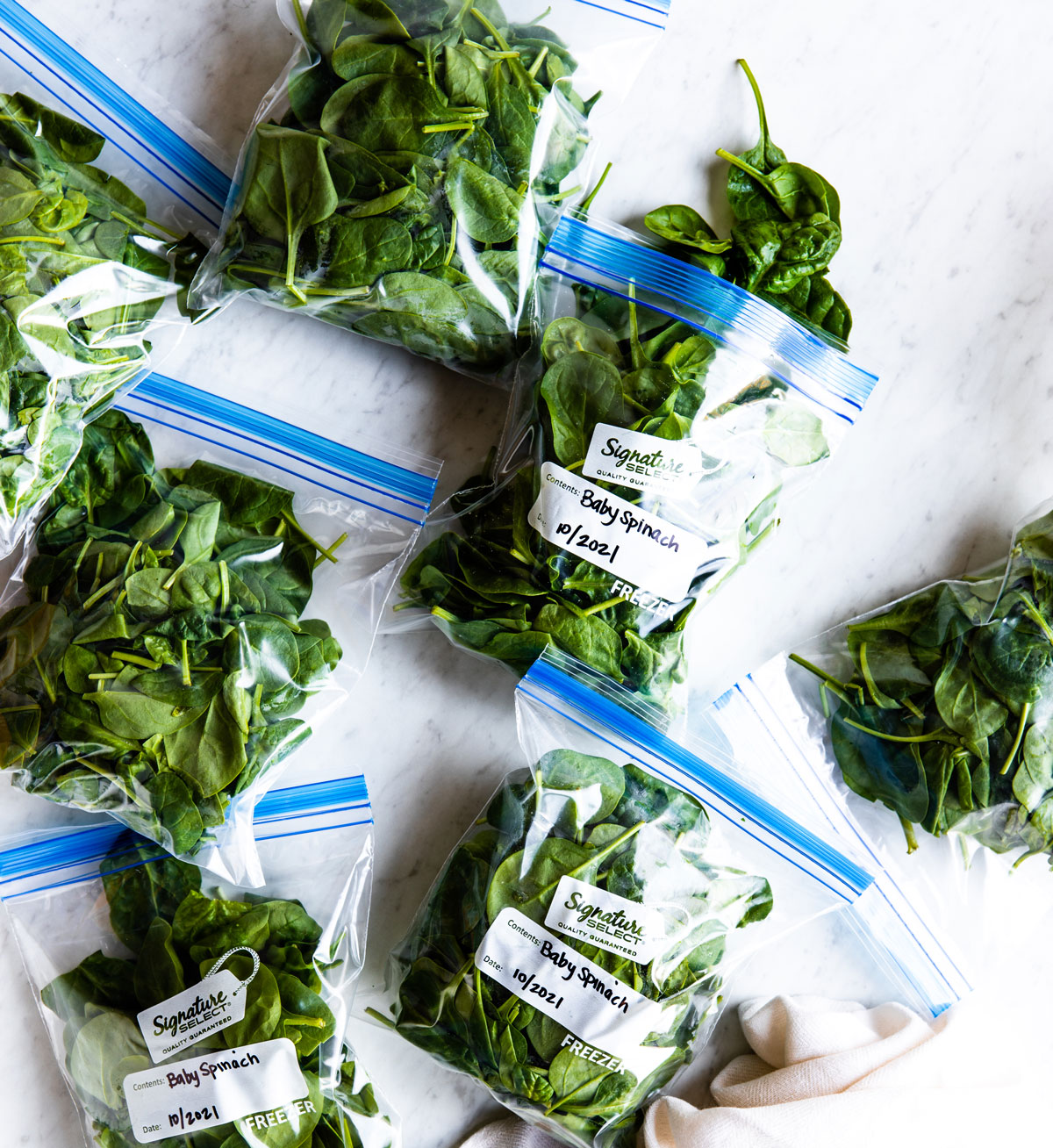
Freezing Your Leafy Greens
Ever wonder how to use up all the beautiful leafy greens you just bought, before they start to wilt? Even though I make green smoothies daily, I sometimes need to freeze my spinach or kale to stay fresh longer.
To lengthen the shelf life of leafy greens and make rotating your greens as easy as opening your freezer, try freezing your spinach. I buy spinach and power greens at Costco— freezing half of it maximizes the freshness.
Common Questions
You’ve probably heard of spinach, kale and lettuce, but leafy greens also include carrot tops, beet greens, swiss chard, arugula and more! They can grow all on their own, or be found on the tops of other plants (like broccoli, beets and carrots).
All leafy greens are incredibly nutritious and great to mix into your diet. Kale and spinach are probably the most nutrient-dense, yet you need a variety of greens (and other fruits and vegetables) for the best health. Don’t be afraid to give a new one a try next time you’re at the store. You might be surprised by mustard greens, bok choy and more!
Greens don’t just take place in salads or garnishes for burgers. You can use them in green smoothies, all kinds of pesto, filling for stuffed mushrooms or potatoes. Pretty much anything you want! Next time you are grocery shopping, grab a new-to-you leafy green and get adventurous with how you prepare it.
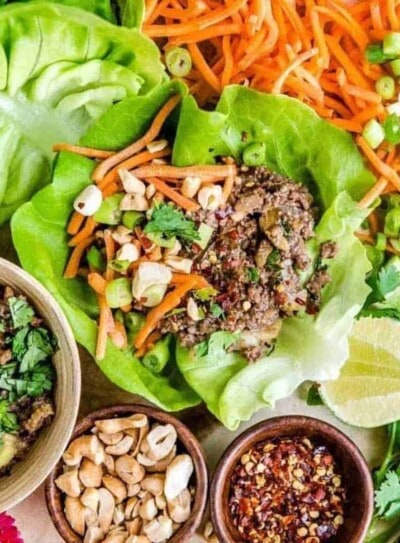

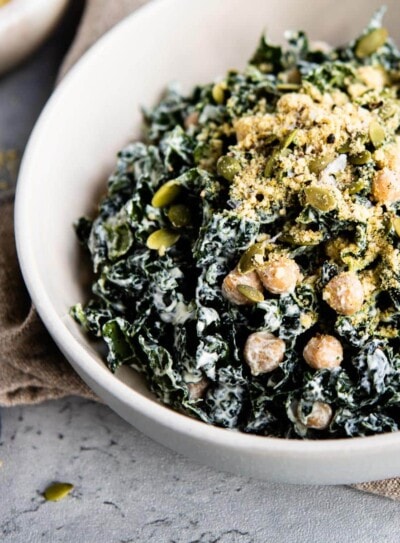
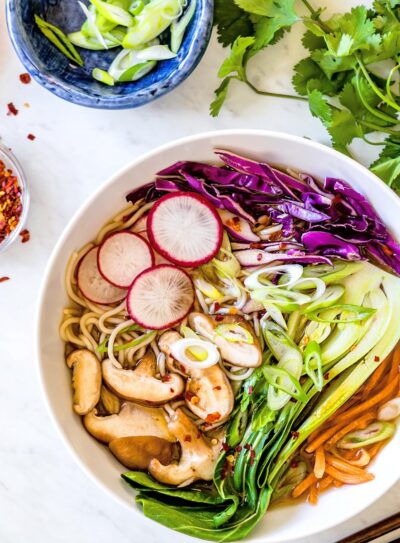

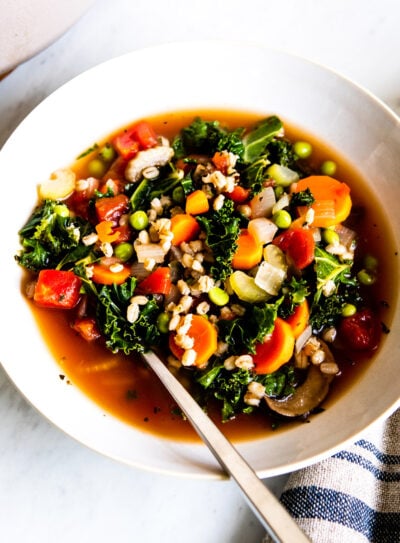
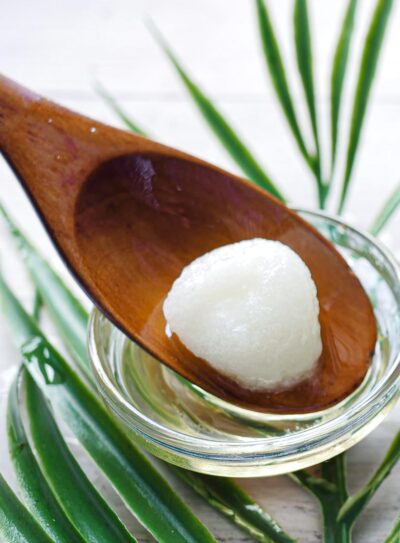
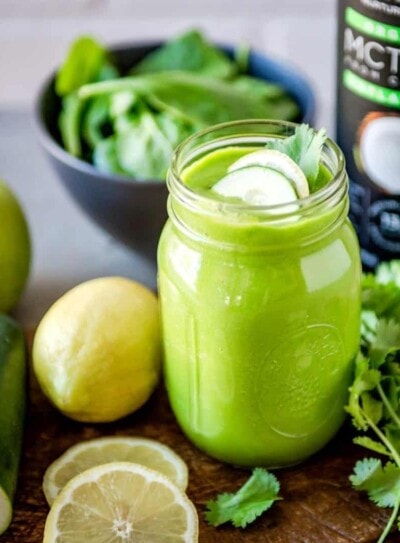
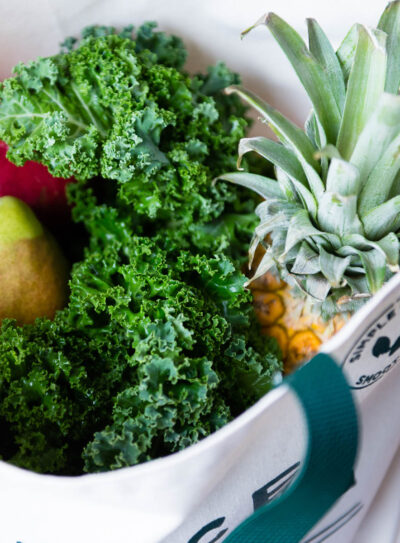
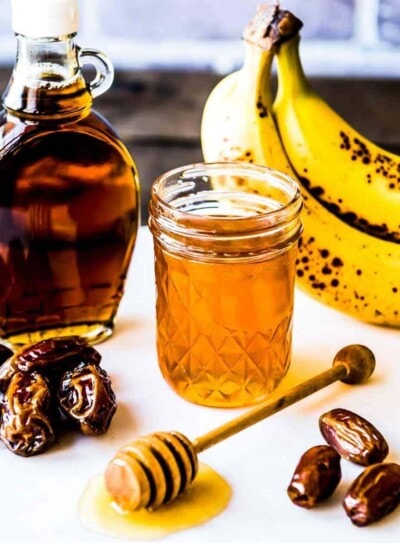

So I found, at walmart of all places, a wonderful bag mix of greens that are young spinach and baby kale. Absolutely delicious in smoothies. I love to eat kale lightly steamed, but find it a bit coarse in smoothies. My question is this: Is there any nutritional difference between the ‘baby’ greens and the mature greens?
PS: This morning’s picture perfect smoothie was the baby mix, mango, peach, and lime juice. Gorgeous bright green and delicious!
Hi Cindy,
Great question! Baby greens have a milder taste, but contain similar nutritional values to their more mature self. Using baby kale is a great option if you’re finding your smoothie coarse when blendin’ with kale. Try it, and let us know what you think!
Cheers 🙂
Am in love with green smoothies. Not making them too sweet, since that triggers my wanting more sweets. I have been adding Matcha to all my drinks and it is a real boost to energy with no side effects, such as being hyper. Drinking Matcha tea is excellent too.
Hi Carol,
Thank you so much for reaching out, we’re so excited to have you blendin’ with us!
Cheers 🙂
Could you recommend a good brand of Matcha?
Hi Marjorie,
We love reaching for DoMatcha and Republic of Tea. There are many other great green teas out there to choose from, so choose what’s best for you!
What is your take on parsley?
Hi Cheryl,
We love parsley! Parsley specifically targets any build-up in your kidneys, liver, + bladder and helps to flush it out of the body. Not only is parsley great for detoxing, this herb has a distinct flavor that can liven up any green smoothie!
Learn more about blendin’ + detoxing with herbs here…
https://simplegreensmoothies.com/fresh-herbs
How about watercress? Is it the same as arugula?
Hi Liz,
Watercress’ peppery flavor makes it the perfect substitute for arugula!
Cheers 🙂
I bought organic broccoli leaf from my local Costco and tried that in a few of your smoothie recipes in place of spinach. It was super good! It helped make them a little sweeter, and from what I understand, it’s a great green superfood. 🙂
Hi Robin,
That’s great to hear! We love blendin’ with broccoli + broccoli leaf, and love that it’s high in calcium! Thank you so much for sharing!
Have you tried watercress in your green smoothies? It’s rather bitter, similar I think to arugula. Any specific recipes you might recommend to incorporate watercress into my rotation?
Hi Kirsten,
Watercress has a very distinct flavor. The flavor is a little peppery and spicy. So we would recommend only using a small amount at one time. Switching up a recipe + using one cup of watercress, with another cup of a leafy green you enjoy (spinach is a great compliment) is a perfect way to add watercress to your green smoothies.
Watercress would make a great addition to our Beginner’s Luck recipe…
https://simplegreensmoothies.com/best-green-smoothie
Have you tried edible chrysanthemum leaves? It’s deliciously mild. I pick mine up from the local Asian Market.
Hi Sue,
I personally haven’t tried them, but will definitely need to look into them! Thanks for sharing.
Cheers,
Amanda, Simple Green Smoothies
A newbie here. Need recipes
Hi Tom,
Welcome! Check out Beginner’s Luck, it’s one of our favorite recipes, and perfect if you’re new to green smoothies!
https://simplegreensmoothies.com/best-green-smoothie
Looking for a book? All of our material is available on our website or through downloadable PDFs available for purchase. This fall we’re coming out with our first book!! 🙂 We can’t wait to share it with our SGS community, so keep an eye out for it!
Let us know what you think of Beginner’s Luck! And reach out with any questions, we’re always here!!
“The China Study Cookbook” and “Forks over Knives”
hi!
I just wanted to know if broccoli was considered as a leafy green..? Thank youuu!
Hi Margaux,
It is! And it’s a great source of vitamin C, vitamin A, potassium, + folate.
would I cook it? and if so, how? thanks!
Hi Claire,
We love adding raw broccoli to our smoothies, it offers a great fresh taste (and a healthy dose of calcium)! If you notice your blender having trouble breaking down the broccoli stalks you can always steam + cool the broccoli prior to blending. 🙂
Hi! I just signed up for a summer CSA and was wondering what I could throw into a smoothie. Any advice about turnip greens and radish tops/greens? It would be such a waste to toss them out.
ive used radish greens before! great. taste is hidden like spinach.
Great info!!!! Thanks for sharing!!! I’ve been rotating spinach and kale for months. It’s good to know what other greens i can use and the benefits of each one!!!
Hi Gina,
Thanks for your note! Keep us updated on what new leafy greens you add to your smoothies!
Cheers! 🙂
Hi….I used to drink smoothie a week ago….it contains 3 to 4 types of leafy vegetables which are available in summer in india…I never blend any fruit to it..and add 1 lemon juice and pinch of salt…is it good option for green smoothie or not…
Hi Asho,
Blending several varieties of leafy greens + lemon juice sounds so simple + delicious! Thanks for sharing! 🙂
Thanks for the great explanation of the various greens for smoothies. Have you tried a (thumb size) piece of ginger or turmeric root or a dash of fresh lemon juice in your smoothie? If not please try and see if you like it. Thanks.
Good health and happy greens to you.
Joseph,
We love adding turmeric, ginger, + lemon to our smoothies! We love the boost to our immune system that all three give!
Here’s one of our favorite smoothies that contains all three…
https://simplegreensmoothies.com/honey-turmeric-smoothie
How about cactus?
Hi Jessi,
Hmm…I’ve never blended with cactus before! If you try it, please let us know, we’d love to hear how it worked for you!
Cheers 🙂
I currently live in Europe and really enjoy lambs lettuce (called mâche or rapunzel in some other places?) as an alternative to spinach. Hopefully when I return to the US I can find a source because this is a really good green, very mild, and loaded with nutrients.
Hi Don,
You’re in luck! Many Whole Foods Markets carry mache, either on its own or in mixes.
I’ve been going to the store and picking up the salad mix that has spinach, kale and Swiss chard in it. How will that affect alkaloid build up? Should I just buy it separately?
Hi Ilene,
You just want to ensure you’re getting a good mix of leafy greens, and not relying on one specific type!